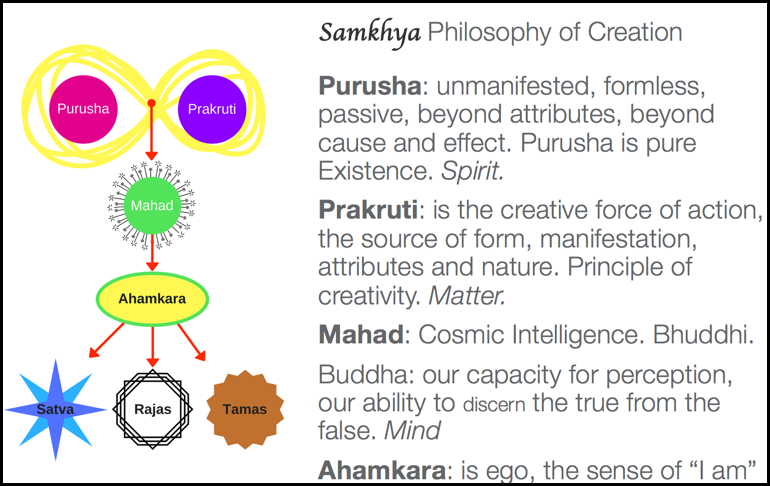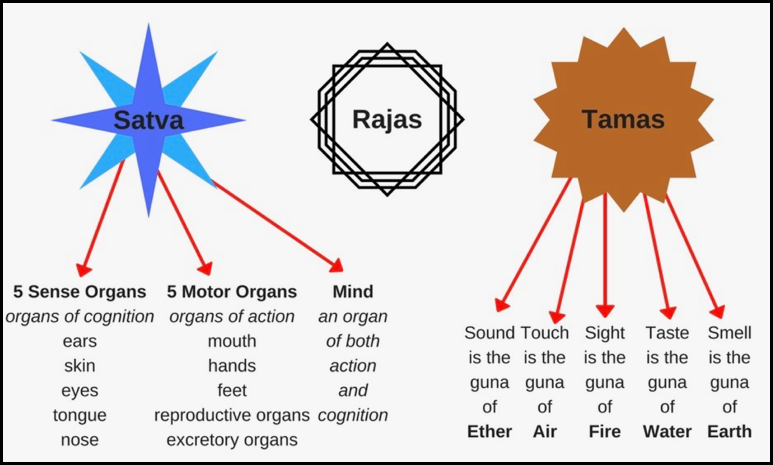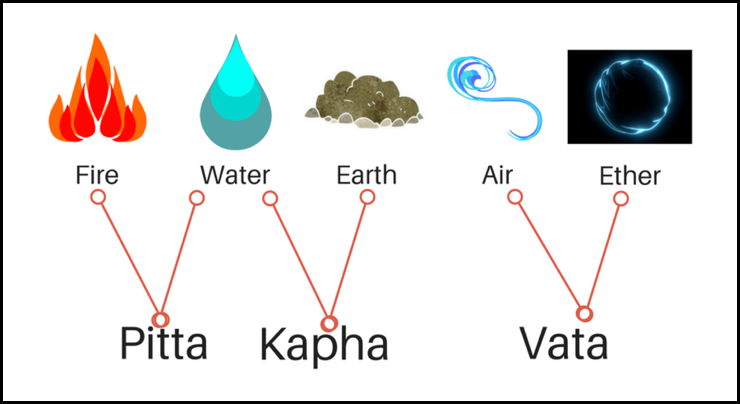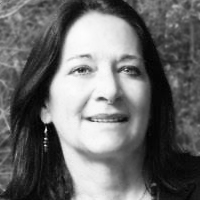Introduction and Overview
In Part One, we went through a brief overview of what addiction is, and the yogic perspective on addiction. In this talk, we are going to delve deeper into the Ayurvedic philosophy, and break down some of the postures, transitions, and practices, so that you can take these and incorporate them into your treatment protocols right away. In Part One, we also looked at addiction, the description of addiction, and we primarily used Tommy Rosen's definition, "addiction is any behavior that you continue to do in spite of the fact that it brings you negative consequences into your life." In our clinics, we are primarily looking at AOD, alcohol and other drug addictions, but also keep in mind that there are other addictions, like food, the internet, technologies, etc. It is anything that we are using to draw us away from our life. An addiction is any behavior that we continue to do, in spite of the consequences.
We also looked at the signs and the symptoms of addiction, and the four Cs of addition: the loss of control, cravings and compulsive using, continued use in the face of consequences, and what I like to add is, the loss of community supports. There are all very important as we start to look at this.
We talked about what recovery is. Recovery is defined as, "abstinence from the primary, as well as secondary substances." You cannot stop drinking, and start smoking pot. You are not giving up heroin, and going to Crown Royal. We are looking at all primary and secondary substances. It is also a return to health; physical, mental, emotional, and spiritual, and being an active member of the community. You can stop using in a treatment center, in a jail cell, locked in your home, but are you able to live a full, productive life out in the community? We also talked about addiction being a disease of extremes. This is something that draws us into why yoga is so wonderful in working with this population.
Yoga
The word yoga means union or connection. We are connecting physical movement with breath, we are connecting body with spirit, and we are connecting ourselves with our community, and with a higher source. Keep in mind as we talk about yoga, how we are forming different connections. In Part One, we looked at Ayurveda, the sister science of yoga. This is where most people get lost. They look at yoga as doing a set of postures and exercises, while others delve into yoga a little deeper and learn about the philosophy. This is what helps us to understand how we are using yoga as a treatment modality.
Before getting your OT license, you learn the disease concepts, like anatomy and physiology. If you are going to go work with say a pulmonary population, you have to learn all about respiration and how it works in a healthy person. This is the same way with using yoga. As a therapeutic modality, you need to delve into the aspects of Ayurveda, and understand why it works to heal.
We also talked about the mind-body spirit connection, which we as OTs already know. These are the concepts of Ama and Agni. Ama and Agni are the energy and the central concept of Ayurveda's approach to health and disease. In the body with disease and illness, it is a resulting toxic counterpart to health. When Ama builds up in the body of the addict, it affects the neurobiology and the physiology of the body. It sets up the craving within the addict. The toxins build up and cause imbalance. Samskaras are repetitive-based behaviors, or the habitual behaviors of addiction.
Eight Limbs of Yoga
In yoga, we have what are called the Eight Limbs of Yoga.
- The Yamas are rules of moral code and include ahimsa (non-violence or non-harming), satya (truthfulness), asteya (non-stealing), bramacharya (sexual restraint), and aparigraha (non-possessiveness).
- The Niyamas are rules of personal behavior including saucha (purity), santosha (contentment), tapas (discipline or austerity), svadhyaya (spiritual studies), and Ishvara Pranidhana (constant devotion to God).
- Asana refers to yoga postures but in Patanjali’s initial practice, it referred to mastering the body to sit still for meditation. The practice of yoga asanas came about eight centuries later, which helped disciples ready their bodies for meditation.
- Pranayama are yoga breathing techniques designed to control prana or vital life force.
- Pratyahara means withdrawal of the senses.
- Dharana refers to concentration.
- Dhyana is the practice of meditation.
- Samadhi is merging with the divine.
The Yamas and Niyamas are the do's and the do not s. Asana is the physical practice, Pranayama is the breathing techniques and breathing practices. Pratyahara is the withdrawal of the senses; it is quieting, closing down, and turning internally. This is not being affected by all the stimulation around you. Dharana is about concentration. Often the addicted person has very limited attention span. Sometimes cannot even read a paragraph of print. This is working on concentration and learning to change those behaviors and patterns. Dhyana is the practice of meditation, which we will talk about at length. Samadhi is the ultimate reason for doing all of this. It is the merging with the divine, finding the spiritual connection. In recovery rooms and the 12 step programs, the 12 steps are practices that will lead the practitioner to having a spiritual awakening. In yoga, the ultimate goal is Samadhi. As you work through the 12 steps, you become closer connected to some spiritual source, whatever you may call it, and that is exactly what yoga does. The purpose of yoga is to bring you through these practices to eventually merge with the divine.
Yoga is not just about touching your toes. There is so much more to it, and when we look at it in connection with the ultimate goal, you start to see how the 12 steps and yoga blend beautifully.
Samkhya Philosophy
Samkhya is the philosophy of creation. We need to start at the beginning, and if you are totally lost at the end of this, feel fine with that. It takes a while. You are hearing new language and new concepts. I am going to try and break them down in such a way that you will see how you really already know them; it is just a different language.

Figure 1. Overview of Samkhya.
At the beginning, there was Purusha and Prakruti. These two forces came together within the Big Bang theory. One is matter and one is energy, and the two came together to start creation. Mahad is cosmic intelligence, and that is the first thing that comes out of this act of creation. Within the human, it is called the Bhuddi or the Buddha, which is our capacity for perception or our ability to see the true from the false. It is the mind. Out of the mind and out of creation, comes Ahamkara, or the ego. This is where we get the sense of, "I am."
Out of the Ahamkara, or the ego, we have three gunas. The gunas are basic qualities or attributes. The three gunas are Satva, Rajas, and Tamas as seen in Figure 2.

Figure 2. The three gunas.
Satva starts us off with a sense of purity. It is stability, clarity, and light. These gunas or essences are within everything and within us. They are within the season, within a flower, within everything in creation. If we have these in balance, then we are healthy and doing well. Let's look at food as an example. Satva would be fresh, crystal clear water or light fresh fruit. Tamas is the opposite of Satva. If Satva is light, Tamas is heavy and darker. It is mashed potatoes or dark mushrooms, which grow in the dark. It is a heavier, weightier existence. Rajas is the energy that moves us back and forth between the two.
Out of Satva comes the sense organs, the motor organs, and the mind. Out of Tamas, we have what the sense organs experience; sound, touch, sight, taste, smell. Also, out of Tamas, we get the essence of the earth. These aer ether, air, fire, water, and earth. I will show you how these come together in a little bit.
Dosha
How many of you know what your Dosha is or have taken a Dosha test? Out of Tamas we have fire, water, earth, air, and ether or the elements.

Figure 3. Overview of Doshas.
If you take fire and water, and you mix them together, you are going to end up with is Pitta. If you take water and earth and blend them together, you have Kapha. Air and ether give us Vata. Pitta, Kapha, and Vata are the Doshas. Pitta in a person would be someone who is very excitable, energetic, always moving to the next thing. Fire and water together are light and quickly moving. Water and earth gives us Kapha. A Kapha person would be someone who is a little heavier, denser, slower, and more of the couch potato. This is the person that it takes absolutely everything to get up and moving. From air and ether, we have the Vata person. My husband is Vata. He is not anchored to the earth. These are the very creative and artistic people, who seem to float through life. They might miss the sarcasm or jokes. They miss the struggle in life as they kind of float up above it
Each person has a unique nature and a unique Dosha. If you have not taken it, you can go online and get a Dosha test. It consists of simple questions. Is your skin oily? What color are your eyes? What kind of food do you like? The questions are vague, but as you go through the test, you start to describe who you are. Now if you take your Dosha test as you are today, that would be your moment of imbalance today. And then if you take it a second time, you might be at your best. Typically for most of us, we were at our physical best in high school when we were playing sports, active, and energized. This would be a time that we would get a true sense of what your true nature is.
Now, Ayurveda says that at the moment of conception we are perfect. Once we are born, we begin to shift into imbalance. Nutrition, environment, family stressors, work stressors, aging, etc. can throw us further into imbalance. With Ayurveda and yoga, we can work to bring ourselves back into a better sense of balance for what our true nature is. If I am a fiery Pitta person, I am probably not going to do well in a very hot yoga class. I need to counter balance my Pitta with maybe a slower, heavier yoga class. If it is winter, I might need a hot class, but if it is the middle of summer and I am a Pitta, I certainly do not want to be in a hot yoga class or eating jalapeno peppers. If I am a Kapha person and more lethargic, I might want to be doing some crossfit or more active training to get my body working at its best.
The Chakra System
The Chakra system has been around for thousands of years. It is represented by different colors (Figure 4).

Figure 4. The Chakra system.
The Chakra system comes from various Eastern spiritual teachings, including Hinduism and Buddhism. These are the areas of the body that ancient traditions have called Spinning Wheels of Energy. In most representations, they look like these disks. But actually, if you envision them more as a record album on a turntable, that is the way they are oriented. Some turn clockwise, some turn counter clockwise, and the rate and speed at which they turn all determine your functioning, your energy, and how you relate to yourself and the world around you. These energy centers develop as we develop. Our age relates to the Chakra system. We are going to talk about the seven main Chakras, but there are hundreds of energy points and centers in the body. If energy is blocked at any one of these main areas, this is going to affect our development and function.
Let's start off at one year old. We develop the root Chakra, down at the base of our perineum. It is our connection to the earth and our groundedness. It is feeling that we belong on the earth, and it represents the first time we have ever seen or experienced this lifetime. We are getting familiar with the planet. Next, we come up to the sacral Chakra. We are beginning to understand our emotions. It is about sexuality, and it is located at the sex organs. It is our creativity and emotions and where we start at age two to make strong attachments with our loved ones. At three years of age, we are starting to work with the solar plexus Chakra. More of the ego is coming into play with a sense of self and understanding of how we work in relation to the rest of the world. We start to observe the world and bring in concepts of sharing and playing with others. At four years of age, we connect now with the heart Chakra. The heart Chakra represents love and connection, but it is in regards to both ourselves and others. When imbalanced, the heart can be overbearing or afraid to love. When it is balanced, it allows us to not only love, but connect, build interconnections, and have a foundation of who we are going to be dependent on. This is how we function in the world, where we feel safe, and are able to expand and reach out to others. We are learning our connection to the earth, by becoming more familiar with it, expressing love to family and friends, and becoming more social. At five years of age, we are coming up into the throat Chakra. Here, we are beginning to build our communication. We can clearly vocalize our needs instead of just demanding. This is the development of communication, self expression, as well as developing a healthy balance of listening as well as speaking. Communication is not just about speaking, but being able to hold back, conceptualize what needs to be spoken, and then speaking clearly and getting our messages across. Of course, at five years of age, children are starting their education. At six years of age, the concepts and the developments of the Chakras work up into the third eye. The third eye Chakra is all about intuition. It is located where the pineal gland is. This controls our awake and sleep cycles, and helps us to learn to critically think. We are now in school, working on math problems, reading books, and putting abstract concepts together. We are much better at commutating knowledge and thoughts to others, and we are starting to better understand, not only ourselves, but others. We are understanding that our behaviors impact others, and we are able to make better choices. These are much higher level concepts.
